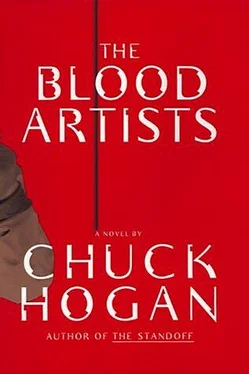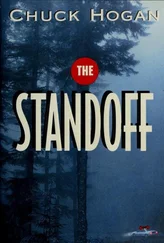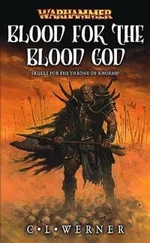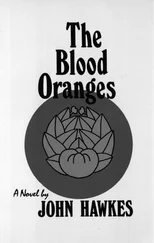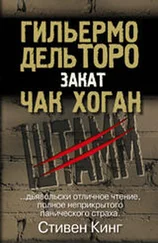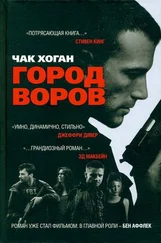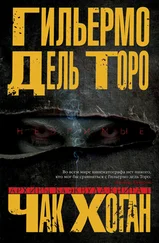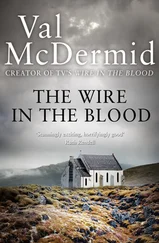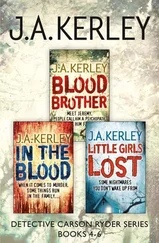Our co-authored findings were published to acclaim in The New England Journal of Medicine and entitled, “Noninduced Superimmunoresponse and the Search for the Survival Mechanism: The Strange Case of Dr. Peter Christian.” Peter’s pseudonymous identity and reputation were however generally known within the CDC and the greater medical and scientific community, and the professional acclaim he enjoyed only exacerbated his alienation from his peers.
The origin of Peter’s enhanced immune system could be explained only as an accident of genetics, although a six-generation family history had yielded no clues. His body somehow recognized and isolated unhealthy intruders with alacrity, overwhelming and disabling them profoundly, and dispatching them without any trace of infection — including the production of antibodies. While this latter condition seemed to preclude any direct therapeutic application of his gifts, Peter’s blood serum did evince certain benefits in laboratory tests. I determined the reactive process to be CMI, or “cell-mediated immunity,” a little-known function of the immune system distinct from the classic antibody response. With CMI, patrolling killer T cells destroy not merely the invading virus, but the infected cell itself, simultaneously ending the virus’s bid for reproduction and ridding the body of the threat.
Transfusions of his blood, however, wreaked havoc on laboratory animals. The problem was that Peter’s killer Ts attacked without restraint in non-primates, not stopping at pathogens but going on to devour healthy body cells and eventually whole organs and the blood itself. Still, the prospect of a blood serum enhanced with disease fighting properties sustained my laboratory efforts over many more months.
Before that day in Africa, I had never seen him be anything but scrupulously careful, or otherwise dare to tax his system in an uncontrolled setting. Peter had the so-called doctor’s disease, the compulsion of many twenty-first-century physicians and scientists acquainted with contagion prevalence and modes of transmission to wear latex gloves at all times, even socially. In fact I assumed that Peter went to bed with a pair on. He was conscientious to the point of compulsion regardless of his incredible natural gifts and had never before been one to take any unnecessary health risks. Direct transmission from an unknown virus like this one, such as infective matter gaining entrance into his body through membranes, or a direct blood exposure, such as from a needle stick, still posed a threat. I kept an eye on him throughout that long, hot night, and at one point noticed him working in a vaguely rhythmic fashion, moving in time to the patient drumbeat of the distant Pygmies.
I was being followed. Whenever I started out to the vehicles for supplies, or went to a quarantined hut to isolate an advanced case from their family, or carried a body to the morgue, the girl with vitiligo shadowed me along the quarantine border. As I worked over patients she sat on the grass across the dividing line, hugging her pink dappled legs, watching me. There were by then only seventeen people remaining on the healthy side. Her time was running out.
At midday I found that I could no longer ignore her, and left trauma suddenly, crossing to the center of the mall. She stood as I started to move, hesitated when I began in her general direction, then rushed to meet me at the quarantine line. I pulled her groping hands from my suit and examined her eyes with a penlight. I inspected her mottled arms and legs, which she displayed proudly, following my gaze with rapt anticipation. She exhibited no signs of the illness. I called upon a nurse to run PCR tests on the remaining seventeen asymptomatics, then wrested myself away again. The girl struggled against me, lunging at my shoulders as I twisted free, stopping only at the quarantine threshold, calling after me as I walked away, “Docteur! Docteur!”
By the middle of the fourth day, I knew that all our efforts were in vain. Working in the stifling heat, my body weeping dollops of sweat — I had already lost more than ten pounds — treating patients who only days before had carried me their brothers, their mothers, their children, I struggled to retain some facade of humanity, to make contact with these masklike faces before passing them down the line to Peter to be taken apart and studied. Preventive therapy had failed and supportive therapy was inadequate, and worse, unable to keep up with demand. We had reached the limits of our medical expertise with the resources available.
We were not the cause of this, I reminded myself. But neither were we the cure. We were merely the facilitators.
PCR tests comparing the virus in Jacqueline Moutouari to samples taken just that day showed dramatic changes in the genetic architecture of the virus. The pathogen was incredibly labile, which we attributed to the virus’s aeonian radioactive exposure.
The cries came at midafternoon and lasted for several minutes, a feral bellowing somewhere north of camp that halted relief work and commanded our attention, myself and the two nurses, all looking in the same direction as though expecting something to charge out at us through the trees. The sick listened distractedly to the animal screams as though receiving long-delayed news, and a few, such as the strapped-down, wasting figure of Dr. Kaunda, emulated the wild baying, pearls of foam drying at the corners of his broken lips.
Peter left to investigate and later returned to lead me out across the grass bridge, along a macheted path to a high spot outside the camp. It was a ridge overlooking the jungle terrain rolling out to the west. The largest of a thick grove of ancient black trees there had been ravaged, the bottom meter of trunk bark rent to the bare wood and scored with blood and bits of greenish-gray fur. A green monkey lay dead atop a bed of shavings. Its fur was burst with pustules, and black, blood-sodden eyes stared out of its small, drawn, side-turned face. One long arm lay across its belly, the leathery black fingers of both forepaws broken and bloodied. A few paces away, a baboon lay ripped to shreds. The infected monkey had savaged the larger animal before turning its attack upon the tree trunk, then bled to death from its subsequent injuries.
“My God,” I said.
Peter opened up the disinfectant pack he had brought along and uncapped a gallon bottle of industrial bleach. He began sloshing it on the monkey carcass.
“A quarter mile outside camp,” he said, dousing the tree wound. “The virus is making its move.”
Peter often spoke of viruses as though they had motives, as though they were forward-thinking, free-will life forms with plans and hopes for a deviant future.
“Flies are already visiting the kill,” he continued. “Whether arthropods can vector this is anybody’s guess, but we have to assume for the purposes of containment that they can. It’s starting to break.”
I looked out over the ridge into the virgin land below. The camp river continued there, a sparkling blue stripe, eventually pooling into a soft clearing that floated hazily, like a mirage, in the emerald distance. Birds arced in slow, careless circles over pink flamingos high-stepping in the shallows.
“We can’t quarantine the entire jungle,” I said.
Peter nodded his agreement. “That is exactly what I told Krebs.”
I turned back and took a step toward him, then stopped. Dr. Martin Krebs was the director of the CDC. “When did you—”
“Earlier today. Reached him in Washington. I told him what we had. It’s over, Stephen. We’re out of here in four hours.”
The caustic smell of the bleach just then began to drift into my suit hood. “What do you mean?” I said. “These people.”
“Are dying.” His voice was flat, yet urgent as always. “The relief effort has failed. Fifteen minutes after we’re airborne, air force jets will fly in and take out everything within five square kilometers.”
Читать дальше
